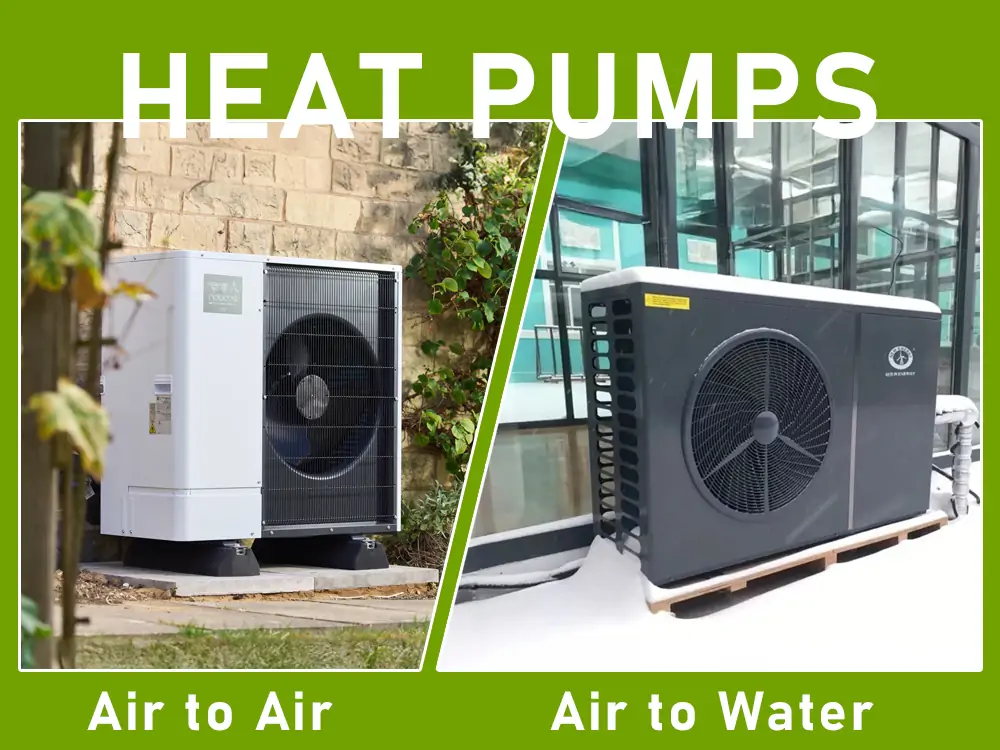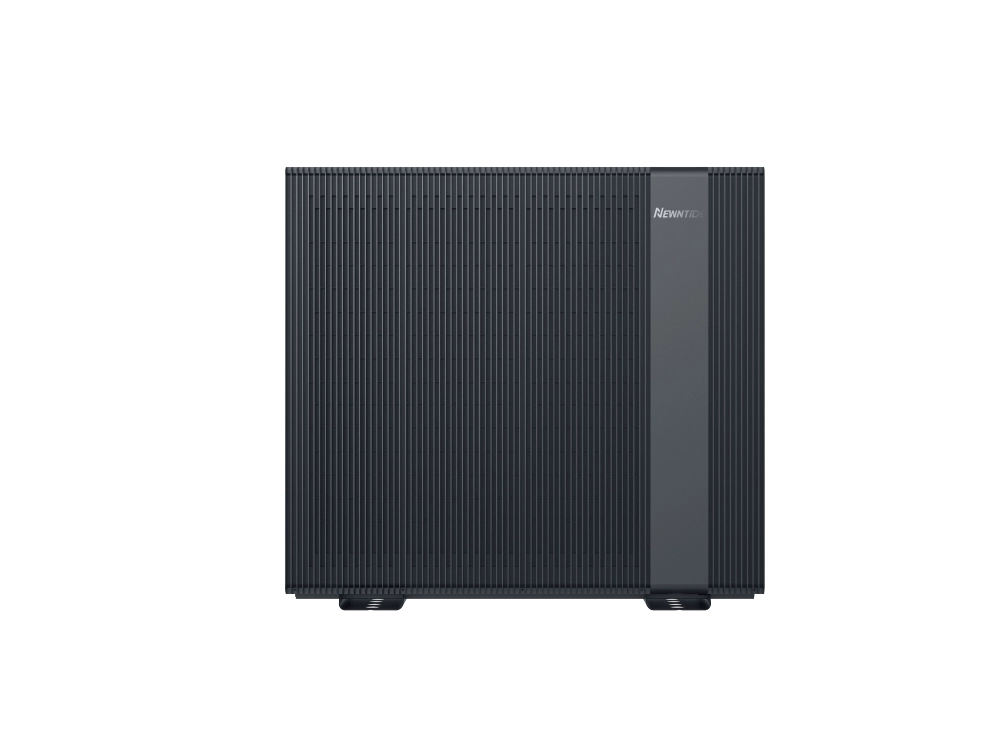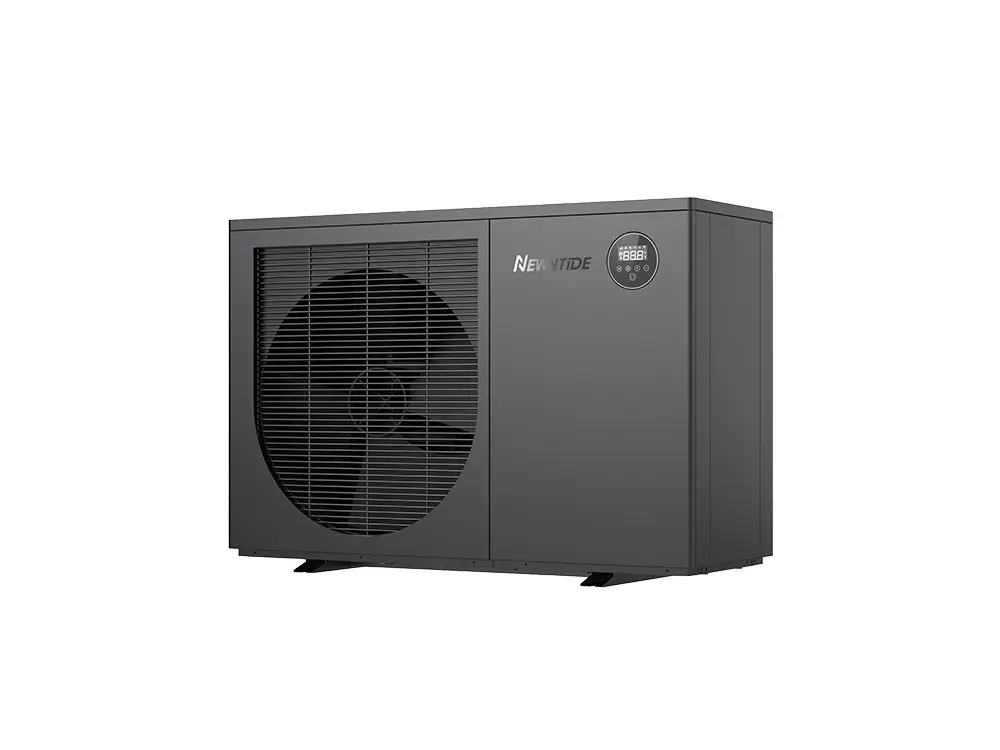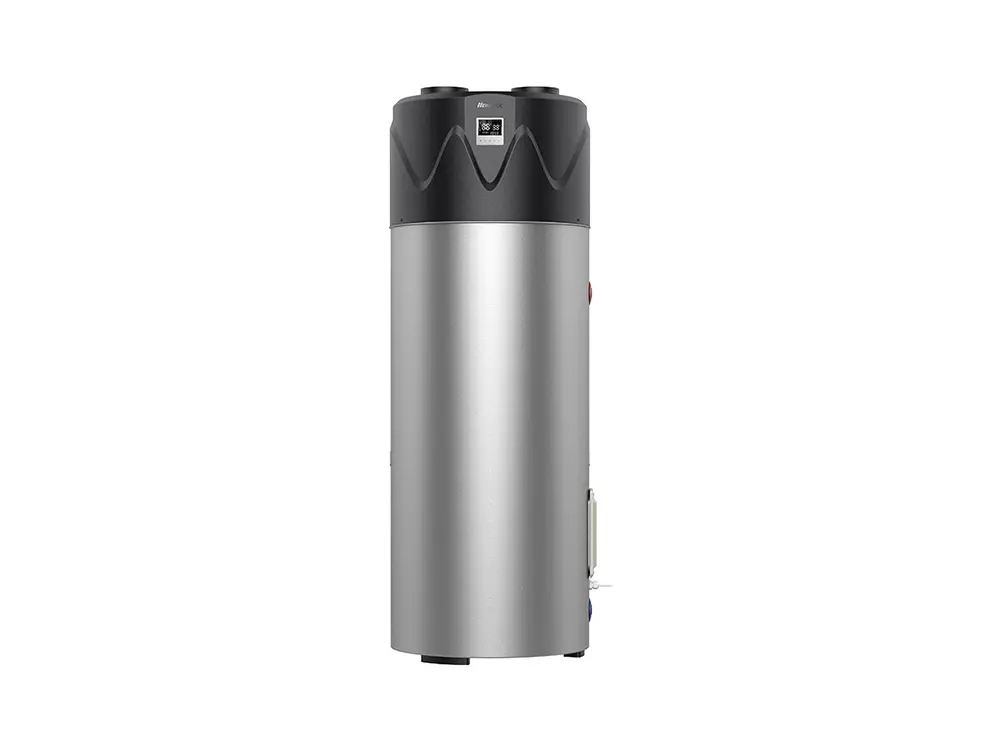
Heat pumps will continue to emerge as renowned eco-friendly and efficient cooling/heating solutions in 2025. Approximately 24 million heat pumps are currently installed in Europe alone.
Air-to-air and air-to-water varieties are widely known options among the appliance’s differing types. Here, we will insightfully compare these two technologies in terms of varying aspects.
We’ll also assist you in deciding which variant is the ideal option for you, based on factors like your budget, household size, etc.
What Are Air-to-Air Heat Pumps?
Definition
An air-to-air heat pump is an electrical device that’s designed principally for space heating and cooling. Such an appliance draws in heat from the external air. It then conveys it through your household via ductwork or an air handler. The heat is then transported to the inside air.
That implies the appliance can provide warmth to your household in the winter. During summer, various models can reverse this process to pull out heat from the inside, cooling your household.
Key features
- Air-to-air units are versatile devices that deliver both cooling and heating, making them a source of year-round comfort.
- Such appliances are typically more economical than their air-to-water counterparts. That’s especially true if you have prevailing ductwork in place.
- Air-to-air varieties are typically easier to install. They necessitate fewer modifications to your household.
- With such devices, you can easily create varied temperature zones in your household. This can save energy and provide personalized comfort.
Common uses
Air-to-air heat pump units are commonly employed for space cooling and heating. Because these appliances don’t provide domestic hot water, a distinct system is required for that.
Such devices are preferable for smaller households and flats where air-to-water varieties won’t suit. Let’s take the United Kingdom (UK) as an example of a European country. Here, they are prevalent in various office buildings.
What Are Air-to-Water Heat Pumps?
Definition
Air-to-water heat pumps are principally intended to deliver heating and domestic hot water.
Such heat pump units take in heat from the exterior air. They then convey it to a wet central heating system. That includes radiators or underfloor heating.
A hot water storage tank is used within such a system. It stores and provides hot water for taps, showers, and more.
Besides, some, but not all, air-to-water variants can deliver cooling functionality.
Key features
- Air-to-water heat pumps are known for having elevated energy efficiency. That can bring about substantial savings on hot water and heating costs. Their efficiency rates can go well up to 400%.
- Air-to-water heat pump noise level lie somewhere between 40-50 dB. That’s analogous to the noise brought about by a refrigerator. That denotes the quieter operation of air-to-water varieties.
- With such devices, you can exclude the requirement of a discrete water heater or a boiler. That’s because they also heat water for domestic purposes.
- They typically have lessened maintenance expenses.
Common uses
Air-to-water varieties are becoming a preferred selection for residential and commercial applications.
Such devices suit households of all sizes, provided the property is well insulated. Their compact models can fulfil your requirements, especially when saving space.
You’ll also find their models designed for offices, stores, and other commercial properties.
Which one is more efficient?
As you see, both heat pump variants are highly efficient. Their efficiency is demonstrable via values like the Coefficient of Performance (COP). While COP is measurable at one point, both heat pump variants typically have a higher value.
Moreover, SCOP (Seasonal Coefficient of Performance) measures efficiency throughout the heating season. The average SCOP value for air-to-water varieties typically ranges from 2.5 to greater than 4. For air-to-air varieties, such value ranges around 3.5, with the latest versions approaching 5.
While that translates to high efficiency, air-to-water heat pumps perform better. They cover your household’s heating requirements and provide hot water.
Air-to-air varieties may not be able to provide all the heat needed, especially during winter. You may necessitate a separate heating system to meet your requirements.
Want easy installation?
Regarding easy and quick installation, air-to-air heat pumps are the ideal selection. They necessitate fewer modifications to your household than air-to-water units.
Let’s consider a mini-split installation of an air-to-air heat pump. Installation of such a system requires the following:
- an outdoor heat pump unit
- an air handling unit
Ideally, that would function when heating a single room. You can use varied air handling units for multiple rooms (one in every room).
Installing air-to-water varieties is more complex. The unit must be integrated into a central heating system. Furthermore, a hot water storage tank is also requisite for hot water provision. All these add up to the installation complexity.
Need to save money?
You may need to save money and make an economical choice. In that case, air-to-air heat pumps are the ideal selection.
In the UK, an air-to-air heat pump typically costs between £2400-£8800. Conversely, air-to-water heat pumps price ranges between £8400-£12350.
Moreover, the installation charges of air-to-air variants can range between £350 to £1700. That relies on installation complexity.
For air-to-water varieties, the estimated installation expenses are typically the same. Yet, it can go even higher. That’s especially true if you don’t have a central heating system. Your household may have a central heating system but lack adequate pipework or radiators. That can also add to the installation costs of air-to-water varieties.
The Boiler Upgrade Scheme (BUS) doesn’t cover air-to-air varieties in the UK. Being the principal UK government initiative, it does cover air-to-water variants. Through this, you can get a £7500 grant for their installation.
I hate noise. Which one is quieter?
You may know that modern air-to-air and air-to-water heat pumps are much quieter. Typically, such variants make noise between 40-60 dB on average.
Yet air-to-water units have a slight edge here. That’s because the air-to-air heat pumps flaunt an outdoor unit. That can produce some noise. That may be a concern if you reside in a noise-sensitive area or near neighbours. To find out how noisy heat pumps are, click here.
You may know that the main unit of air-to-water heat pumps lies inside. Such heat pump varieties operate quietly without being affected by exterior noise. NEWNTIDE air-to-water heat pumps have noise levels as low as 40 dB(A), see product list.
Which one is more flexible to install?
Air-to-air heat pumps allow more flexibility in installation than their air-to-water counterparts.
That makes air-to-air variants favourable for smaller households and flats with lesser outdoor space. The outdoor units of air-to-air heat pumps are usually smaller than air-to-water systems.
Air-to-air heat pumps may necessitate the installation of air ducts throughout the property. Once installed, each room will feel more spacious. There’s no need for radiators to take up floor space and wall room.
Air-to-water variants necessitate sufficient indoor space for the main unit and storage tank installation. That makes a small water tank around 900mm high, x495mm wide x345mm deep.
Which one should I choose?
When opting for one of these units, the following factors will aid you to decide:
Budget
If you are low on budget, air-to-air heat pumps are ideal. The expenses are much higher with air-to-water units.
You can use incentives like the UK’s Boiler Upgrade Scheme for air-to-water varieties. As stated before, it doesn’t cover air-to-air varieties.
Climate
Air-to-air heat pump systems are more fitting for warmer climates. That is especially true in regions where cooling can be acquired in summer, apart from winter heating.
In contrast, modern air-to-water heat pumps are fitting for varying climates. Such appliances can function efficiently in outside frigid conditions. They are especially fitting for regions with cold winters, like Central Europe.
House size
Air-to-air variants are ideal for smaller homes and flats with little or no outdoor space. Such devices typically become less efficient the bigger your household is.
Conversely, larger households can exploit air-to-water varieties that additionally provide hot water.
Heating/Cooling goals
You may necessitate a versatile appliance that delivers both heating and cooling. Then, an air-to-air system is fitting. The air-to-water system is ideal if you primarily necessitate heating and hot water production.
Conclusion
Air-to-air systems are economical, easy, and flexible to install and provide heating and cooling. Air-to-water systems deliver heating and hot water, are more efficient, and typically generate less noise.



